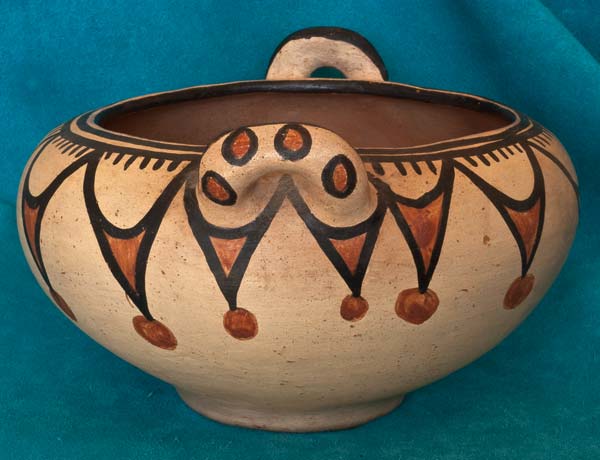
Florentino and Maxamilliana Montoya San Ildefonso Pottery
Circa 1890
SOLD
Presented here for Reference Only
From Dr. Wade's Personal Collection
Southwest historic pueblo ceramics, the rarest of all arts?
The art world was aflutter following the Sotheby's sale on March 19, 2013 of a small Chinese “Ding” bowl,
which set a record price of $2,200,000 at a March 2013 Sotheby's auction. This simply carved cream-colored
cup was bought in 2007 at a garage sale for $3.
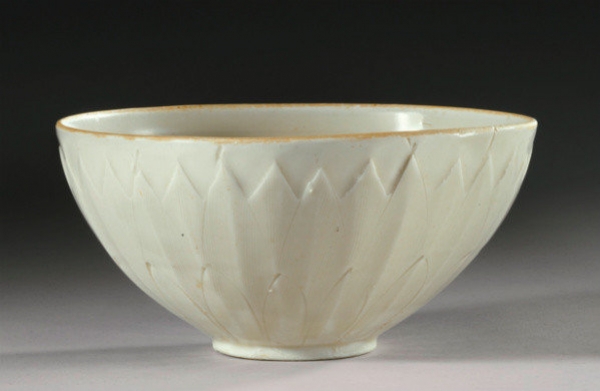 Sotheby Photo of $2.2 Million Ding Bowl
The vessel’s rarity and authenticity is said to have supported its multi-million dollar sale price.
Sotheby Photo of $2.2 Million Ding Bowl
The vessel’s rarity and authenticity is said to have supported its multi-million dollar sale price.
By the same standards, Pueblo ceramics should be among the most expensive pottery in the world.
At the time when the “Ding” bowl was produced, the Northern Song Dynasty was populated by about 50
million people, more than enough mass to support tens of thousand of artisans. In the 1890s, when
this bowl (see image below)was fabricated by the San Ildefonso husband-and-wife team Florentino and
Maxamilliana Montoya, the population of the pueblo had shrunk to a mere 110 souls. Out of this
number fewer than half were women, and of these women fewer than 10 were potters. A similar
situation existed through out the Pueblo world of the 1880s. The federal census recorded for
all 19 villages was a mere 7,762 people.
<><><>
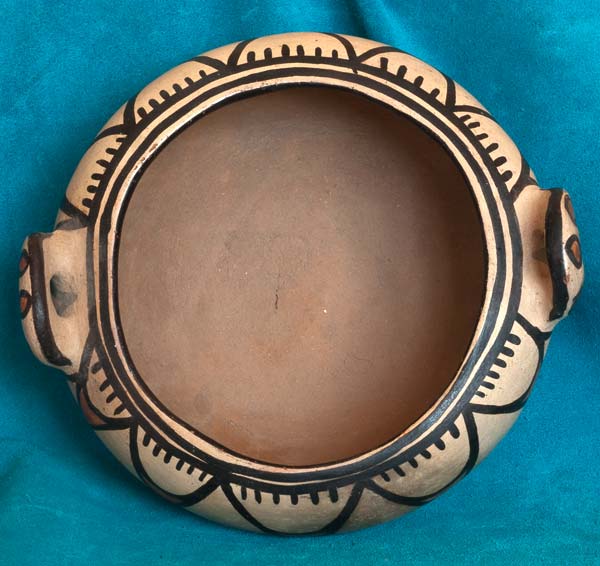 Top View
Top View
 Bottom View
Bottom View
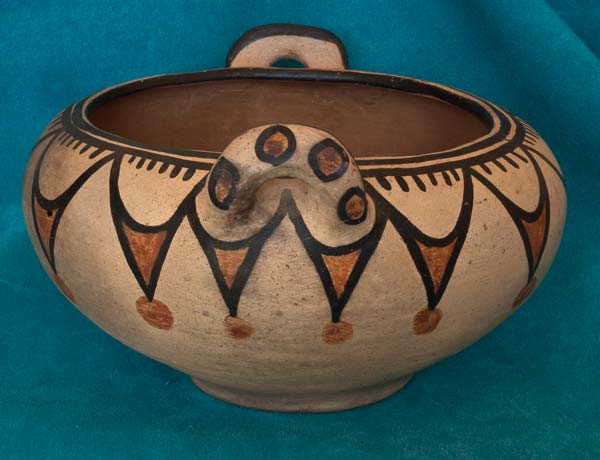 Side Views
Side Views
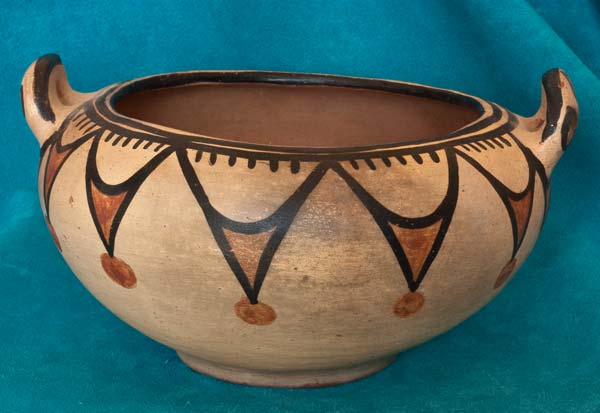

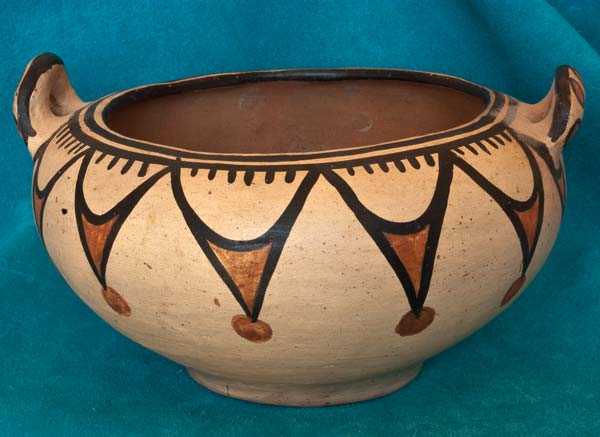 Florentino and Maxamilliana Montoya San Ildefonso Pottery
Circa 1890
The pot is in Exceelent / Like New Condition
Florentino and Maxamilliana Montoya San Ildefonso Pottery
Circa 1890
The pot is in Exceelent / Like New Condition
It appears to have spent its entire life on collector's shelves. There are no
cracks or dings. The pot when very gently tapped makes a pleasant solid sound as if
proudly proving its integrity.
The pot measures 4 1/2" x 8 1/2"
Price $3,500
<><><>
More about Pueblo Pottery
Not all Pueblo women made pottery, and not all who did possessed the same levels of talent and skill.
It’s not exaggerating to suggest that within any one generation only two master potters would emerge.
Historic Pueblo ceramics have commanded prices in the hundreds of thousands of dollars, and the names
Nampeyo of Hopi, Maria of San Ildefonso, and Acoma Mary have often been associated with pieces so valued.
But the vast majority of historic pots are priced significantly below $50,000 and most even below $10,000.
It makes no sense! There’s nothing comparable in world art, nothing more rare, and to my eye nothing
more beautiful than a skillfully sculpted Pueblo jar. How can it be that a handmade, hand-painted,
incredibly fragile earthenware pot a hundred and fifty years old can be bought for $3,500?
Two arbitrary factors have conspired to depress the Indian art market and to hamper recognition of the
traditions it celebrates and purveys as a true world art. First, Indians are close to us. A hundred and
fifty years ago many Anglo Americans dwelled in proximity to native groups and saw them as simply the
“poor folk living over there.” The idea that their superlative historic arts were vanishing and
needed protection, and that increasing rarity would increase these objects’ value didn’t register
except to a few museums and committed collectors.
The second and still handicapping issue is that anthropologists addressed native artworks as ethnographic
artifacts, as a bowl, a club, or a shirt, rather than as examples of a powerful and unique aesthetic.
Anthropological commentary was the equivalent of calling the Mona Lisa “an Italian woman in traditional
dress in front of a landscaped background.” The intellect is powerful, and our human desire to sort
and define is strong and useful. But, as the old song goes, “You’ve got to have heart,” and when
addressing art that surely is true.
I am happy to say that more and more art historians and connoisseurs have for some time been turning
their eyes to indigenous ceramic traditions, and, as they do, the unique brilliance of an elusive
aesthetic is being justly celebrated.
I often hear someone ask “Why are these pots so expensive?” Well, you know, they aren’t. In fact
they are so inexpensive that a world-class collection of world-class art objects can still be built,
and some far-sighted individuals are presently building them. Would you rather buy a $2,200,000 teacup
or an entire collection of vanishing American women’s art? You know my choice. Ed Wade.
Sotheby Photo of $2.2 Million Ding Bowl The vessel’s rarity and authenticity is said to have supported its multi-million dollar sale price.
Top View
Bottom View
Side Views


Florentino and Maxamilliana Montoya San Ildefonso Pottery Circa 1890 The pot is in Exceelent / Like New Condition
